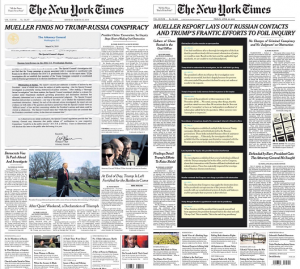We did not make a traditional prosecution decision about these facts, but the evidence
we obtained supports several general statements about the President's conduct.
Several features of the conduct we investigated distinguish it from typical obstruction-of-
justice cases. First, the investigation concerned the President, and some of his actions, such as
firing the FB[ director, involved facially lawful acts within his Article [[ authority, which raises
constitutional issues discussed below. At the same time, the President's position as the head of
the Executive Branch provided him with unique and powerful means of influencing official
proceedings, subordinate officers, and potential witnesses-all of which is relevant to a potential
obstruction-of-justice analysis. Second, unlike cases in which a subject engages in obstruction of
justice to cover up a crime, the evidence we obtained did not establish that the President was
involved in an underlying crime related to Russian election interference. Although the obstruction
statutes do not require proof of such a crime, the absence of that evidence affects the analysis of
the President's intent and requires consideration of other possible motives for his conduct. Third,
many of the President's acts directed at witnesses, including discouragement of cooperation with
the government and suggestions of possible future pardons, took place in public view. That
circumstance is unusual, but no principle of law excludes public acts from the reach of the
obstruction laws. If the likely effect of public acts is to influence witnesses or alter their testimony,
the harm to the justice system's integrity is the same.
Although the series of events we investigated involved discrete acts, the overall pattern of
the President's conduct towards the investigations can shed light on the nature of the President's
acts and the inferences that can be drawn about his intent. In particular, the actions we investigated
can be divided into two phases, reflecting a possible shift in the President's motives. The first
phase covered the period from the President's first interactions with Corney through the President's
firing of Corney. During that time, the President had been repeatedly told he was not personally
under investigation. Soon after the firing of Corney and the appointment of the Special Counsel,
however, the President became aware that his own conduct was being investigated in an
obstruction-of-justice inquiry. At that point, the President engaged in a second phase of conduct,
involving public attacks on the investigation, non-public efforts to control it, and efforts in both
public and private to encourage witnesses not to cooperate with the investigation. Judgments about
the nature of the President's motives during each phase would be informed by the totality of the
evidence.







